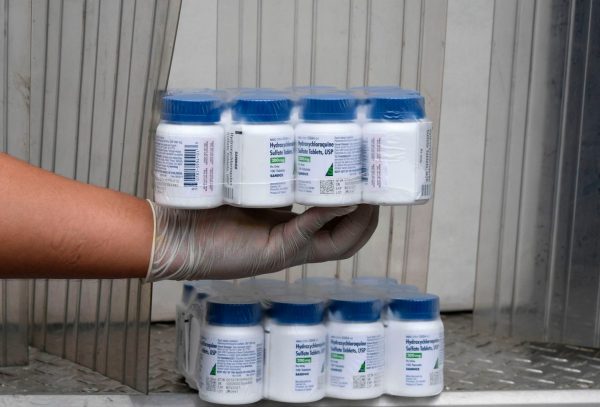
Medicines — for our purposes meaning a manufactured substance, packaged for sale and expected to ameliorate some form of ailment — became a big, global and profitable industry in the 18th century. It was an era of imperial competition, overseas warfare and large-scale agriculture, and one of mass migrations of people, forced and free. These conditions raised particular challenges in keeping people alive and created a market for new products that promised to do so.
In such an era of global movement, mass-produced medicines (often from Europe) found ready distribution across the seas to eager customers seeking simple treatments that could be given with little consideration of the individual. Imagine being a navy surgeon, charged with diagnosing and treating sick sailors in a cramped, damp hold. Faced with easily communicable diseases, such as malaria and yellow fever, that could move quickly through a susceptible and proximal population, such medical practitioners preferred the simplicity (and lower cost) of prepackaged medicines designed to treat a certain ailment or disease over the more time-consuming process of understanding the body of each patient.
While such a take-this-for-that approach may seem familiar today when pharmacies sell over-the-counter remedies for coughs, fevers, warts and other complaints, in the early modern period, such an idea was new and quite radical. It suggested that an emperor, merchant, sailor and captive could all ingest and theoretically be healed by the same medicine. It stimulated long-distance trade in medicinal substances and offered new options to desperate people.
Bulk medicines thus seemed both promising and necessary.
They especially appealed to the armed forces, trading companies and plantations that depended so heavily on coerced labor of one form or another. These were industries whose logics depended on seeing bodies as interchangeable, and, as a result, transformed mobile populations of sailors, settlers and slaves into generic patients — who could be treated with similar prescription regimes, instead of as individual bodies requiring unique regimens.
Industrialization and capitalization of a medicine manufacturing sector soon followed in the Anglo-American world. For example, the Plough Court pharmacy, a progenitor of GlaxoSmithKline, supplied customers around the Atlantic with medicines produced in its London laboratory. Orders contained a variety of chemical and natural substances that had been processed (distilled, powdered or rolled into pills, for example), packaged, labeled and then shipped to bulk customers overseas.
But there was a dark side of mass treatment: This type of medical practice helped to justify a race-based and violent form of enslavement. In the minds of white, male plantation doctors — men tasked with protecting the investments of owners — different health outcomes for white and black patients fed new ideas about inherent racial difference. Rather than seeing these outcomes as a product of exploitative working conditions, malnutrition or unsanitary housing, doctors believed that conditions such as dysentery or yaws were a product of physiological differences between the races. Such conclusions then informed entire genres of medical literature that pervaded 18th- and 19th-century practice.
For example, one Caribbean sugar estate owner and medical practitioner by the name of Collins published in 1803 what amounted to a theory of physiological difference based on disease susceptibility and treatment effectiveness marked by skin color. Dysentery, in his estimation, affected black people more severely than white people, which suggested different varieties of humans. So strong was this evidence to him that it outweighed Collins’s observation that no differences in internal organs could be found in people of Afro-Caribbean vs. European descent. Nevertheless, Collins’s text and others like it propagated such racial ideologies that informed medical practice for decades, if not longer.
And so, at the very moment doctors gained more consistent access to manufactured medicines and began prescribing them with greater authority, ideas about human difference and disease also gained legitimacy. This was particularly true in the institutions underwriting those medical developments. As government and private purchasers invested in the promise of cures for rampant colonial fevers and fluxes, the expectations for this kind of predictable health care exceeded the realities of local conditions.
When those expectations went unmet — whether due to different lived experiences, misdiagnosis or biased perceptions — ideas of uniformity could quickly shift to ones of difference, ultimately perpetuating inequality and racism. Collins noted, for instance, that plantation medicine required a departure from the rules determined by European doctors based on his experience in the Caribbean, where overdosing, confinement and more forceful, dangerous and painful treatments for enslaved workers eroded any sense of sameness in practice.
In short, medicine is not just about health. It is about power and profit. Trump’s medical statements demand an economic and political analysis, along with an assessment of their medical value (or lack thereof).
Making and selling medicines has long been entangled with empire, extraction and exclusion. Capitalism — and the inequalities and structural racism embedded within it — lies at the core of modern medicine. As those deemed essential workers receive cheers and praise amid rising mortality and calls to reopen the economy, we would do well to examine the long-term medical, economic and cultural patterns shaping expectations about who works, who receives care and who profits.